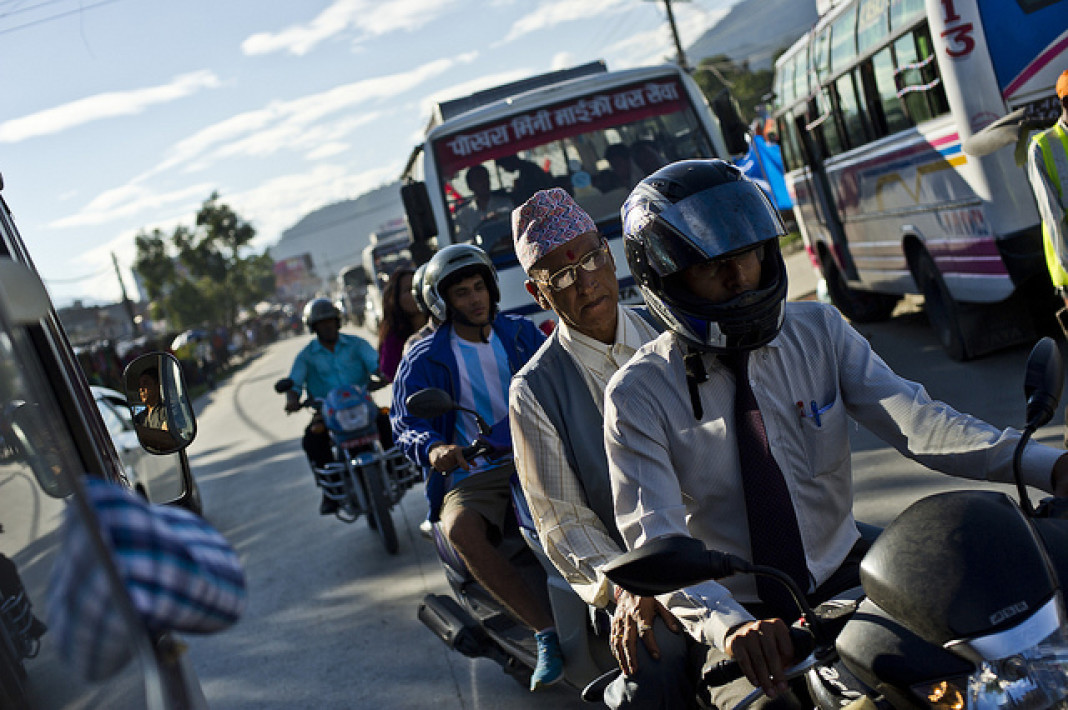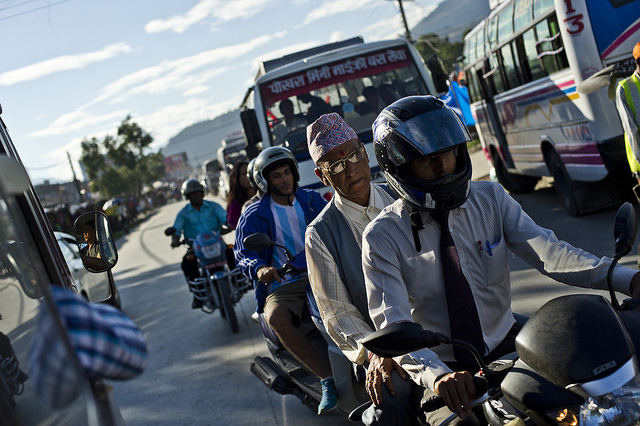As a budget traveler, visiting a city that is pedestrian- and public transportation-friendly is so important that one could (almost) call it a determining feature of a destination. Being in-transit is one of the highlights of traveling and subsequently also one of the most expensive parts of a trip. Wind in your hair, zipping around a city or watching the rural countryside breeze past, moving is life for a traveler. As every seasoned traveler knows, balancing budget and comfort while in motion is a daily concern as not all transportation is created equal. From overpriced taxi rides to luxurious, first class air conditioned train rides, spending your entire budget on transportation is not hard to do.
When I first started traveling seven months ago, the thought of boarding a stuffed-to-the-brim city bus with my over-sized backpack was terrifying enough to keep me paying tourist prices for a private taxi ride. After four months in India, I finally swallowed my fear of being in close proximity to strangers and communicating with wild hand gestures as the entire bus looked on in amusement, in order to preserve the longevity of my wallet. Consequently, I found that public transportation is a good source of amusement (you never know what you are going to see on a city bus) and connection as the locals are eager to try out their English with you and help you find the right bus stop (or even take you to lunch to show you their favorite local dish).
Most cities have excellent bus systems, with clearly marked bus stations and routes in the native language of the country as well as English written on the side of each bus. Figuring out which direction you need to go is (usually) the most work you have to do. Bus rides are a fraction of the cost: up to 1/10 of the price of a private taxi, therefore making it the best option next to walking. And the best part: the bus operators are the most honest people in the transportation game, rarely will they try to overcharge you like a taxi driver would.
Kathmandu is no exception to this rule. A bus ride in Kathmandu will cost no more than 15₹ (.15 USD) to get you to the furthest region of the city. The only difference is the type of vehicle carrying people. Kathmandu’s buses are called “micros” as the vehicle is not a typical bus, it is a white, 15-passenger Toyota van (that fits double that amount). Also included in the bus system are tuk-tuks, white and blue (or green) colored vehicles that resemble more of a moving metal mini-storage unit, that fit about ten people. Here are a few helpful tips in navigating public transportation in Kathmandu.
Buses operate North to South (and vice versa) and East to West (and vice versa)
Coming from a small hometown, I had never ridden a city bus (besides a yellow school bus in elementary school) before I started traveling. This first tip may seem obvious to well-seasoned bus travelers, but for those new to the bus game, this is a helpful tip. Most of the bus stations are identified with a bus sign and a covered bench, usually plastered in bank advertisements, and buses stop every few minutes at each station. Each bus will have an operator hanging out of the window, yelling the next destination in Nepali, managing the people and money flow of the bus. If you are not sure if your stop is included in the ride, you can ask him or her and they will direct you to the right bus.
Most buses only run the length of a particular street as Kathmandu is primarily created on a grid system with streets running parallel and perpendicular to each other (which is good to know if you ever get lost on a self-guided walking tour). If you need only to go a few kilometers north on one street, you’ll only need to hop onto one bus and call it a day. If, however, you need to head a few kilometers north and then a few kilometers east, you’ll have to get off the first bus on the cross street and then take a bus heading east to your destination. This varies from other cities that operate destination-based buses: i.e. in India, if you want to go to the Botantical Gardens in North Kolkata, you only have to board one bus labeled “Botantical Gardens” rather than changing buses every time the streets change directions.
Ratna Park is the main bus hub of the city
You can get anywhere you need to go in Kathmandu from Ratna Park on Kantipath and Bag Bazaar Sadak. Centrally located, Ratna Park is a ten minute walk east from Asan, a fifteen minute walk southeast from Thamel, and is hard to miss with it’s acres and acres of open grass fields lined with blossoming purple trees. If you want to head east to Baneshwor, north to Maharajgunj, or south to Patan, Ratna park is the best place to catch a ride.
Your first time on the bus, ask a local sitting next to you what the price is
In the off chance that the bus operator sees you as a potential exploit for overcharging, always ask a local sitting next to you how much the bus ride is. This is the best way to get a honest price (as the local is not likely to lie to you) and a good reason to strike up a conversation on an otherwise boring ride. Only rarely will you get a bus operator who lies about the price of the ride (especially in Nepal) but to be on the safe side, getting a price from a local will provide you with knowledge to deter being ripped-off.
You can wave down any bus at any time, you don’t need to be at a bus stop
Just make eye contact with the driver, wave your hand, and they will stop for you, even if you are not at the designated bus stop. This is my favorite part of traveling via bus: it’s so easy to get on one!
Make sure you are looking for a white mini van, not an actual “bus”
It took me a few weeks to actually notice the white vans and realize they were the buses. I kept looking for the gigantic buses one normally associates with the word “bus” and kept wondering why there weren’t any. When another traveler explained all those white vans I kept seeing were called micros, I finally understood and saw the bus routes that were previously disguised by my ignorance.
The buses are quicker here than buses in other cities
By bus, you can get pretty much anywhere in Kathmandu in under 30 minutes. Even with a population approaching one million, traffic in Kathmandu flows quite well. Accidents are infrequent and most citizens travel by bus or motorcycles with cars being the last choice of preferred vehicle.
Kathmandu is small enough to explore by foot
Even cheaper than the bus routes, and better for your health, is hitting the pavement old-fashioned style and walking the streets of the city. Most outer edges of the city (Maharajgunj and Patan) can be reached via foot in under an hour-depending on how fast you walk. In the spring, Kathmandu experiences beautiful sun-filled days with blossoming flowers lining the roads and mild temperatures. I highly recommend walking to your favorite destinations: it’s a great way to reap the benefits of gorgeous weather and the endorphins naturally released through exercise. I do have a word of caution for those looking to heed this advice: pedestrians do not have the right of way like they do in the States. Exercise constant vigilance when crossing the street and watch for falling bricks when walking on the sidewalk- nearly 52% of Kathmandu is under construction in attempt to widen streets to allow more ease of flow for traffic.
I highly recommend taking public transportation in any city but especially Kathmandu. The bus operators are friendly and easy-going and the system is easy to manage. It is a great way to meet locals, experience authentic culture and get out of the touristy places of the city. Kathmandu is a diverse city, rich in historical and religious history, with out of the way destinations made easily accessible by bus. Your wallet and gypsy spirit will thank you for exploring beyond the central tourist hub of Thamel using an economically friendly route.







